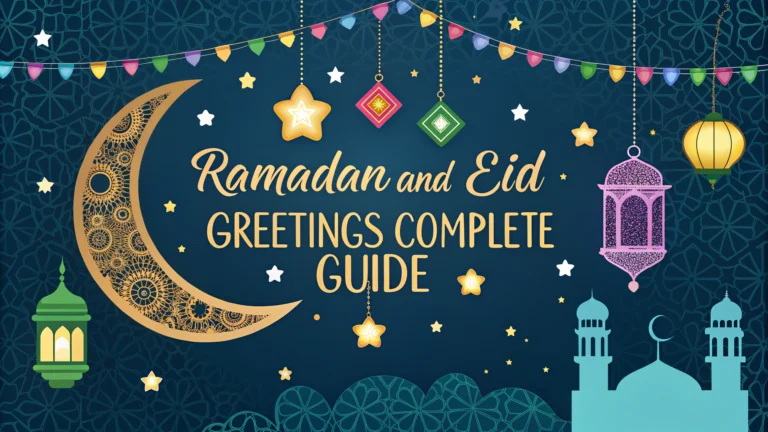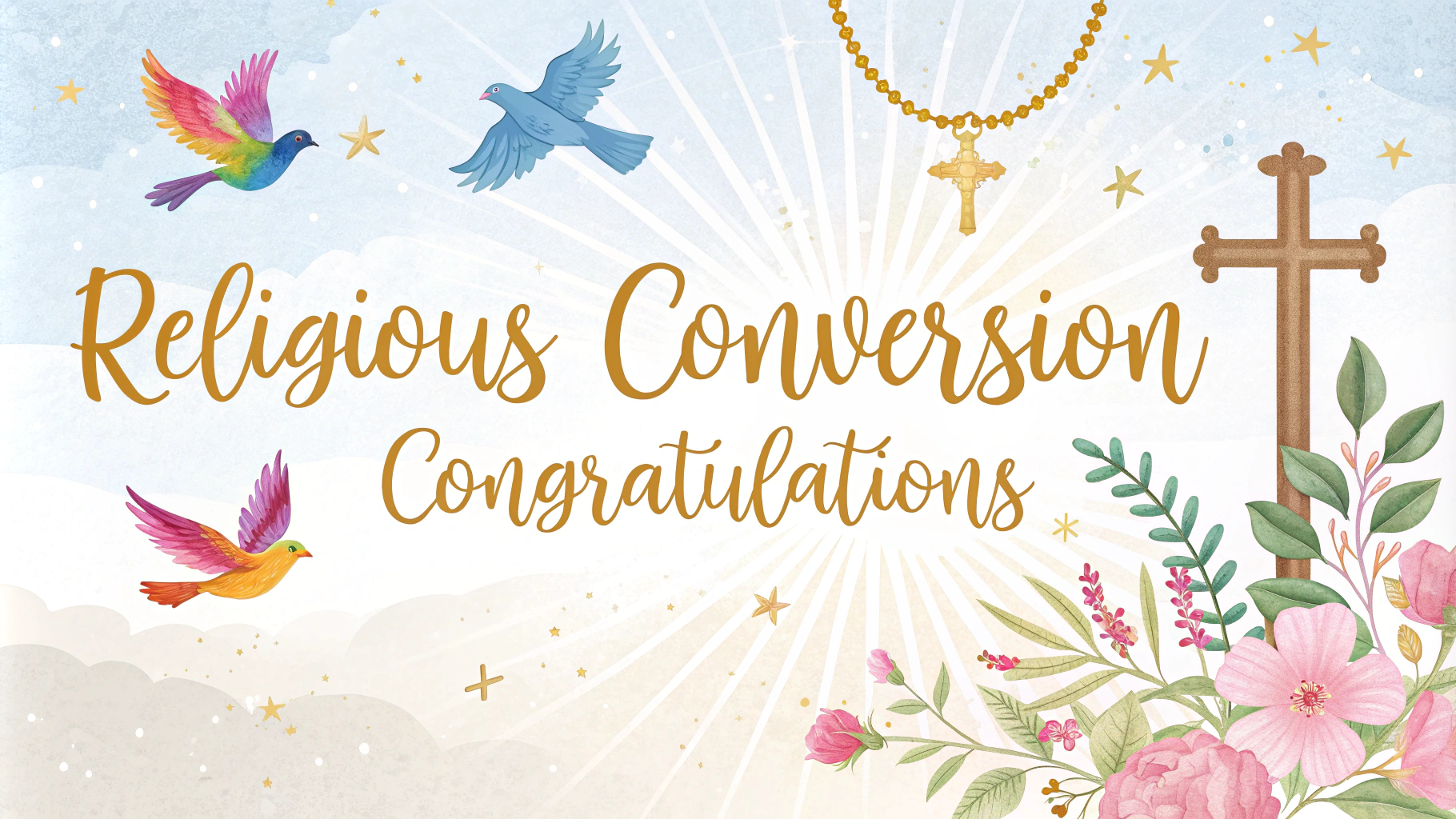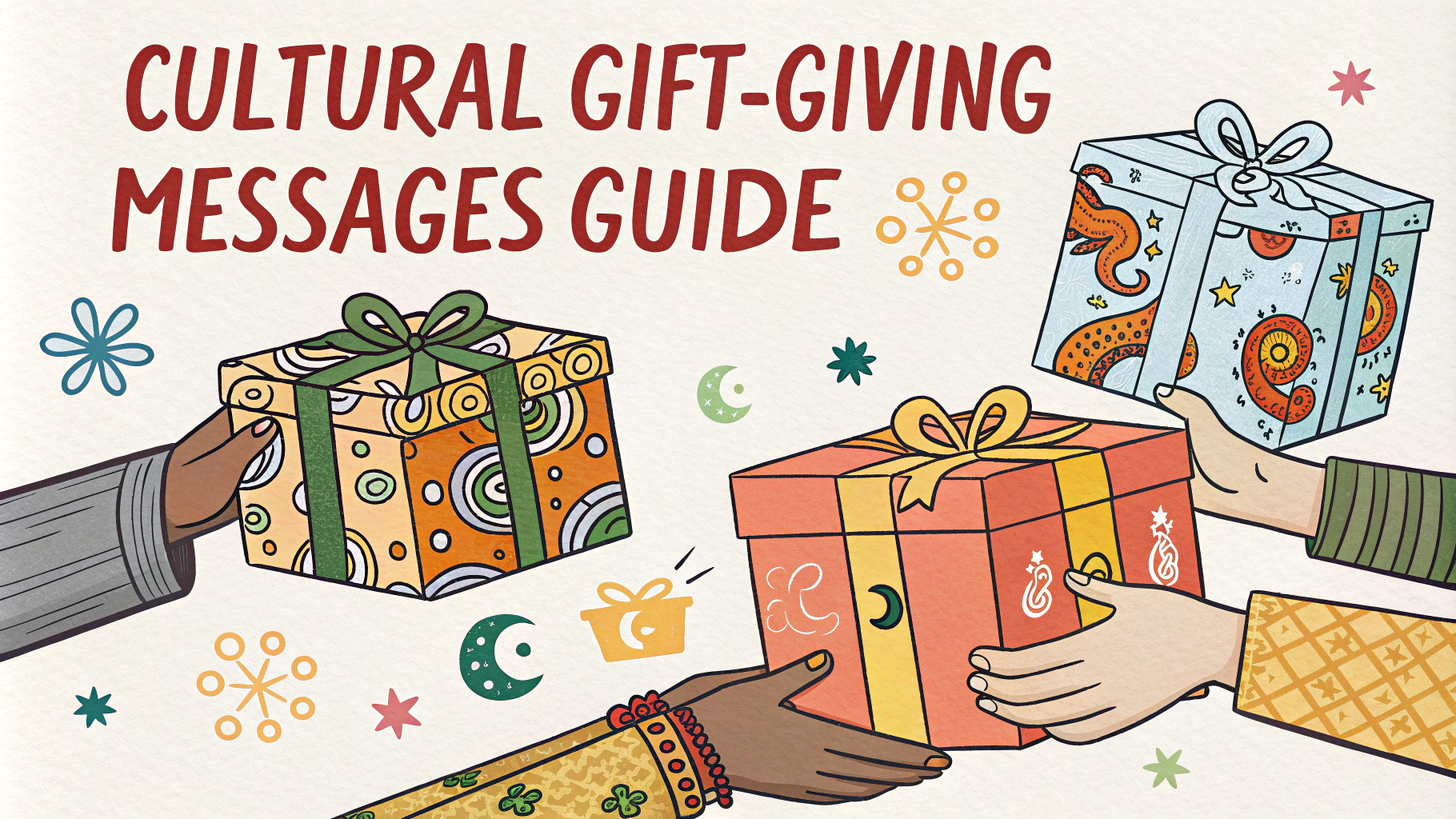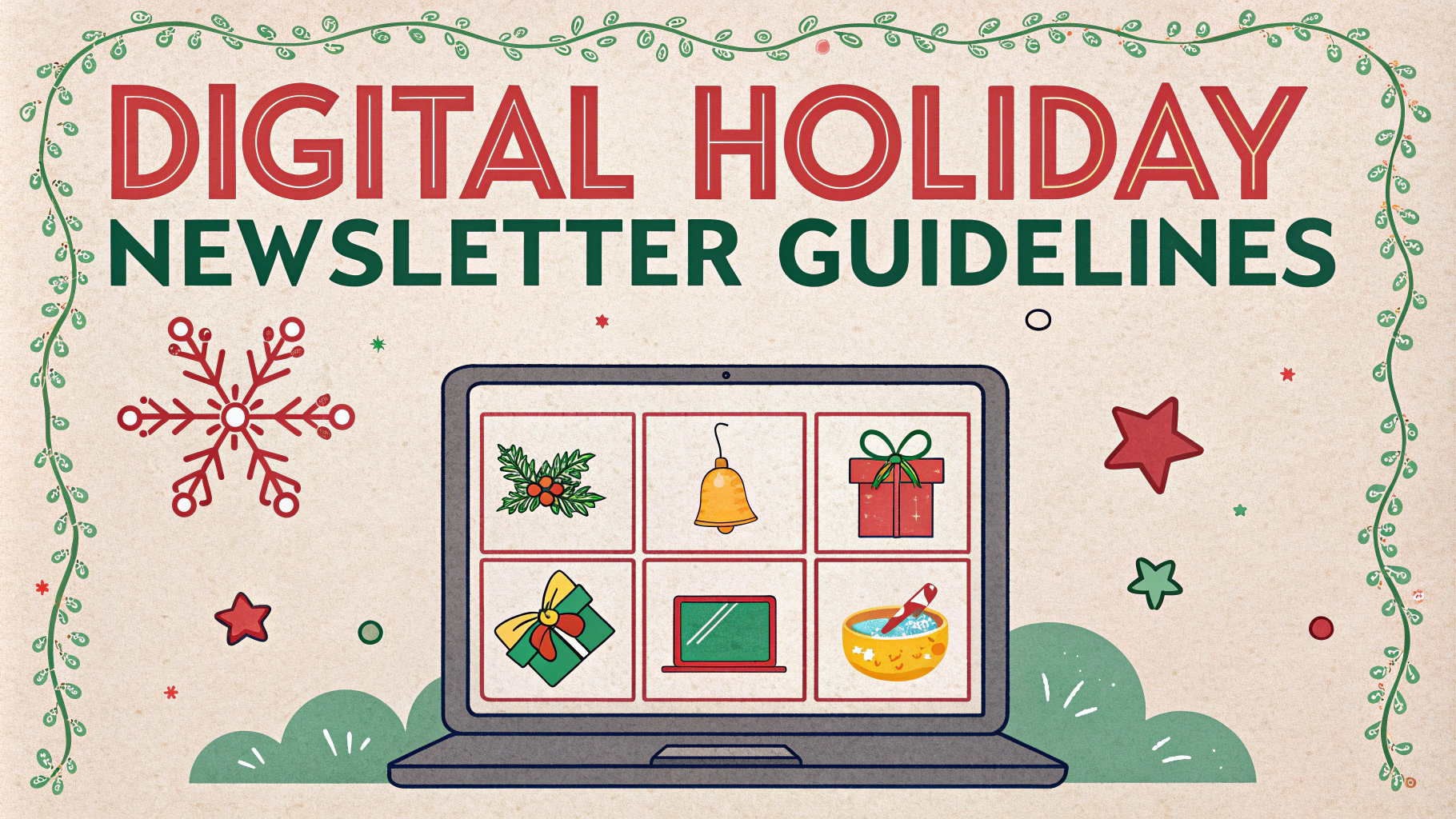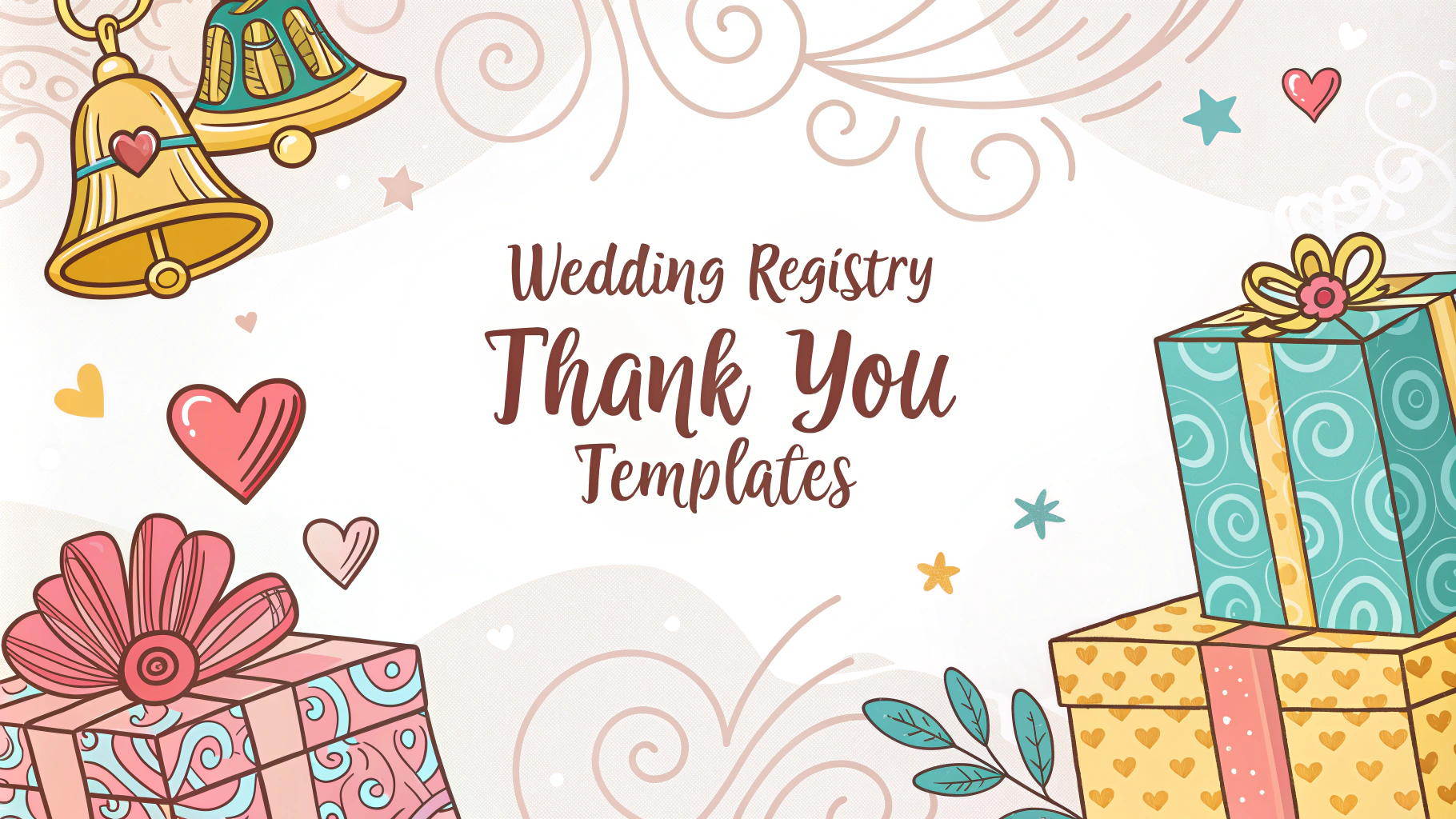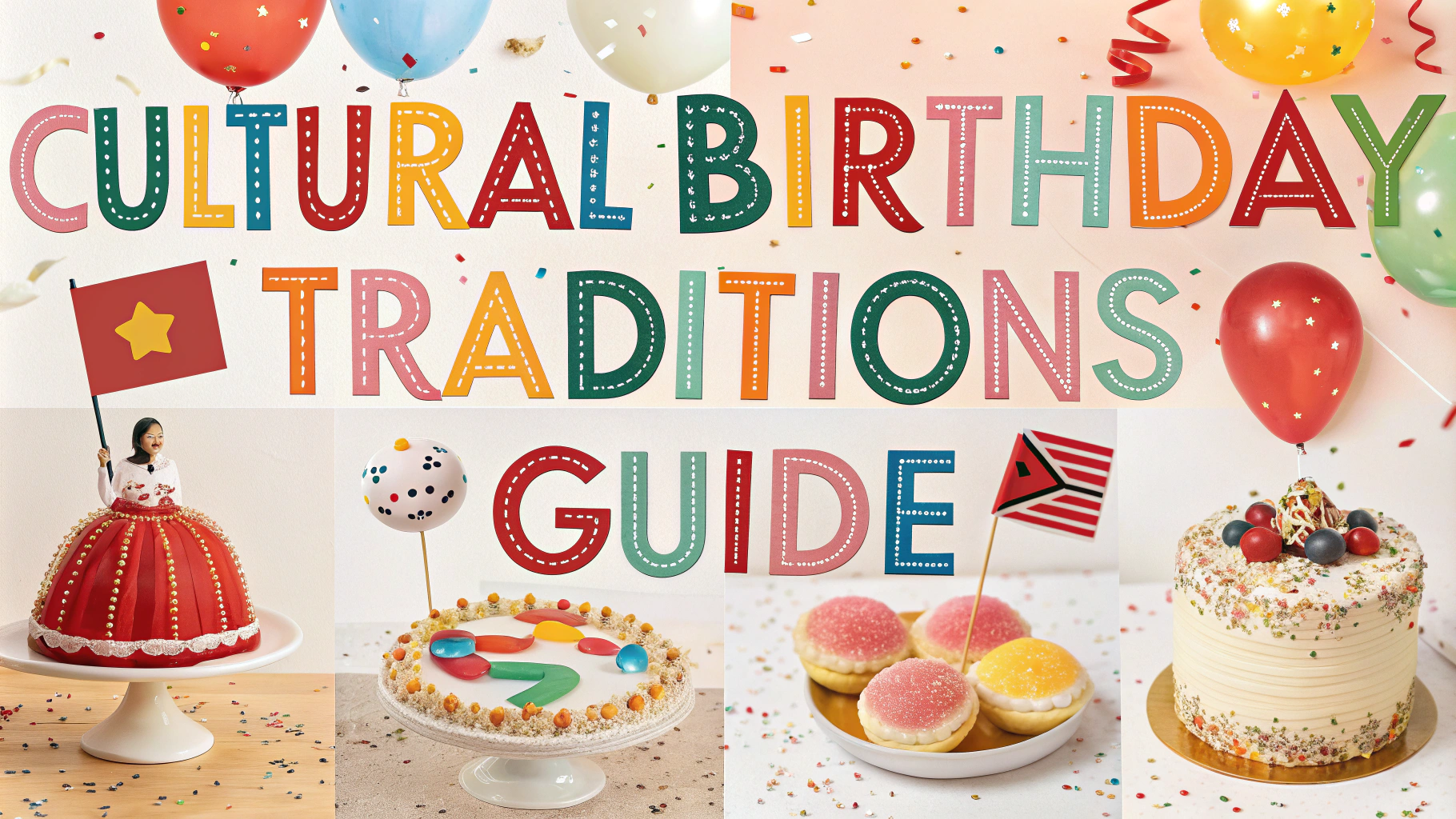Ramadan and Eid bring special opportunities to share warm wishes and heartfelt greetings with family, friends, and community members.
Traditional Ramadan Greetings
The most common Arabic greeting during Ramadan is “Ramadan Kareem” (رمضان كريم), which means “Generous Ramadan”.
Another popular greeting is “Ramadan Mubarak” (رمضان مبارك), translating to “Blessed Ramadan”.
- Mubarak Alaikum Al Shahar (مبارك عليكم الشهر) – May this month be blessed for you
- Kul ‘am wa enta bi-khair (كل عام وانت بخير) – May every year find you in good health
- Taqabal Allah mina wa minkum (تقبل الله منا ومنكم) – May Allah accept from us and from you
Eid Al-Fitr Greetings
“Eid Mubarak” (عيد مبارك) is the universal greeting used during both Eid celebrations.
- Eid Saeed (عيد سعيد) – Happy Eid
- Kullu Aam Wa Antum Bi Khair (كل عام و أنتم بخير) – May you be well throughout the year
- Minal Aidin Wal Faizin (من العايدين والفائزين) – May you be among those who celebrate and prosper
Business and Professional Greetings
For professional settings, consider these respectful messages:
- “Wishing you and your team a peaceful Ramadan”
- “May this Ramadan bring success and prosperity to your business”
- “Warmest Eid greetings to you and your colleagues”
Social Media Greetings
Keep social media greetings concise and engaging:
- #RamadanMubarak with a crescent moon emoji
- #EidMubarak with celebration emojis
- Share inspiring Ramadan quotes with beautiful Islamic art
Writing Tips for Greeting Cards
Consider these elements when writing greeting cards:
- Address the recipient by name
- Include a traditional Arabic greeting
- Add a personal message about your relationship
- Close with warm wishes for the future
Timing Your Greetings
Send Ramadan greetings on or before the first day of Ramadan.
Share Eid greetings after the new moon has been sighted, marking the end of Ramadan.
| Occasion | Best Time to Send Greetings |
|---|---|
| Ramadan | Evening before Ramadan or first morning |
| Eid al-Fitr | After moon sighting announcement |
Remember to respect local customs and traditions when sharing your greetings.
Regional Variations in Greetings
Different regions have unique ways of expressing Ramadan and Eid greetings:
- Turkish: “Ramazan Bayramınız Kutlu Olsun”
- Persian: “Ramazan Mobarak”
- Urdu: “Ramzan Mubarak”
- Malaysian: “Selamat Berbuka Puasa”
Digital Greeting Etiquette
When sending digital greetings, consider these guidelines:
- Use appropriate religious imagery
- Avoid music in religious greetings
- Include translations for non-Arabic speakers
- Consider time zones when scheduling messages
Family Gathering Greetings
Special phrases for family gatherings during Ramadan and Eid:
- “May our family bonds grow stronger this Ramadan”
- “Blessed Eid to our precious family”
- “Together in celebration, united in faith”
Conclusion
Whether sharing greetings in person, through cards, or digitally, the spirit of Ramadan and Eid celebrations lies in expressing genuine warmth and goodwill. Choose greetings that reflect your sincerity and respect for these sacred occasions while considering your audience and the context of your message.
Remember that these greetings are more than mere words – they’re a way to strengthen bonds, spread joy, and share in the blessings of these special times.
FAQs
- What is the traditional way to greet someone during Ramadan?
The most common Ramadan greeting is “Ramadan Mubarak” (Blessed Ramadan) or “Ramadan Kareem” (Generous Ramadan). Both are equally acceptable and widely used across the Muslim world. - When should you say “Eid Mubarak”?
“Eid Mubarak” is said during both Eid al-Fitr (after Ramadan) and Eid al-Adha. It’s appropriate to say it from the moment Eid is announced until approximately 3 days after. - Are there different Eid greetings for different countries?
Yes, while “Eid Mubarak” is universal, different regions have their variations. In Turkey, people say “Bayramınız Mübarek Olsun,” in Malaysia “Selamat Hari Raya,” and in Indonesia “Selamat Idul Fitri.” - Is it appropriate for non-Muslims to give Ramadan or Eid greetings?
Yes, it’s absolutely appropriate and appreciated when non-Muslims offer Ramadan and Eid greetings. It’s seen as a gesture of respect and cultural understanding. - What is the meaning of “Taqabbal Allahu minna wa minkum”?
This Arabic phrase means “May Allah accept it from us and from you” and is commonly exchanged during Eid. It’s a way of hoping that Allah accepts both parties’ worship and good deeds. - What are appropriate Eid gift-giving customs?
During Eid, it’s traditional to give gifts called “Eidi,” typically money to children, and adults may exchange presents. Dates, sweets, and home-cooked meals are also common gifts. - How do you respond to “Ramadan Mubarak”?
The common response is “Khair Mubarak” or you can simply reply with “Ramadan Mubarak” in return. Both responses are considered appropriate and respectful. - What’s the difference between Ramadan and Eid greetings?
Ramadan greetings focus on the blessed month of fasting, while Eid greetings celebrate the completion of Ramadan (Eid al-Fitr) or the commemoration of Prophet Ibrahim’s sacrifice (Eid al-Adha). - When is the appropriate time to start Ramadan greetings?
Ramadan greetings can begin a few days before Ramadan starts and continue throughout the holy month. Some people start extending wishes as soon as the moon sighting is confirmed. - What are some social media appropriate Ramadan and Eid greetings?
Common social media greetings include “Ramadan/Eid Mubarak,” accompanied by crescent moon emojis , mosque emojis , or star emojis ⭐. Digital cards and Islamic-themed GIFs are also widely used.
